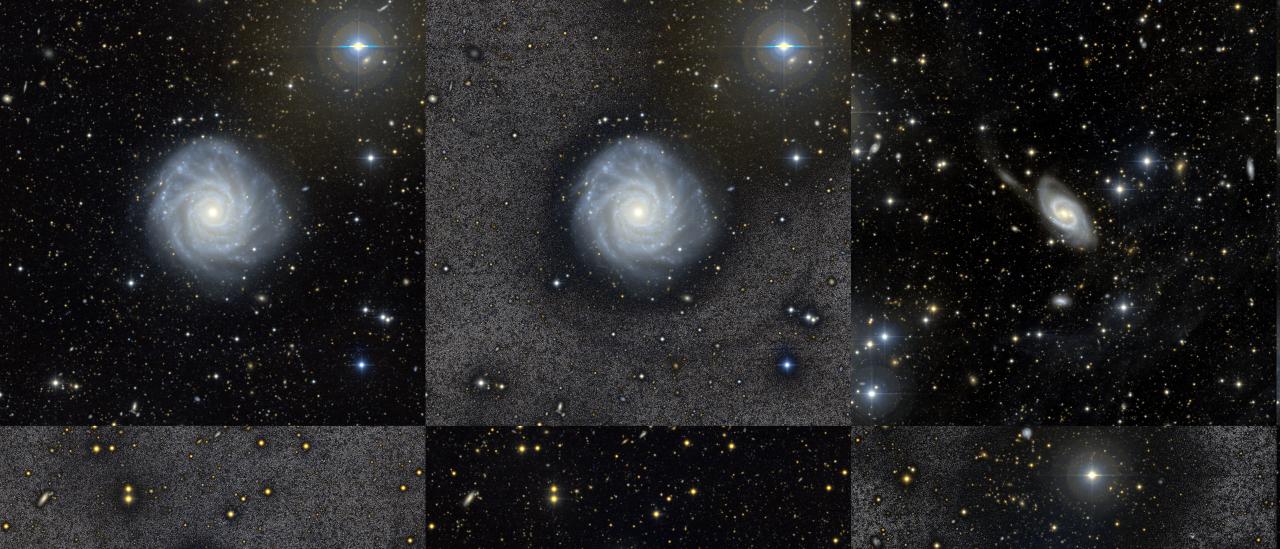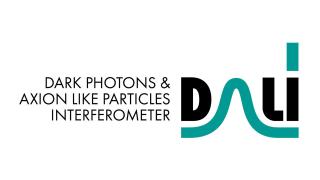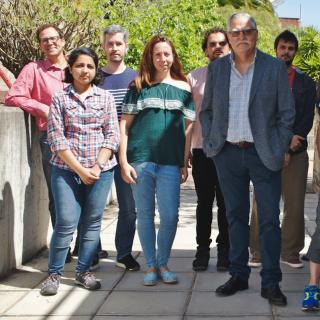General
In less than a decade, our understanding of the Milky Way has largely increased. It is now clear that we live in a disc-like galaxy hosting several stellar structures, namely thin and thick discs, a bar that has developed a B/P, a nuclear disc, and a nuclear stellar cluster, as well as a supermassive black hole at its heart. Such complex system formed in distinct phases. First, gas infall resulted in the formation of the thick disc and stellar halo. The major Gaia Sausage/ Enceladus merger that happened 10—11 Gy ago enhanced star formation in a great way, and contributed to the growth of the thick disc. Finally, the Galaxy entered a quieter era in which the thin disc was formed, eventually giving rise to the stellar bar and nuclear disc. Such scenario matches the broad description of galaxy evolution within a Cold Dark Matter (CDM) Universe... but there are still many loose ends in this Milky Way story.
CDM depicts a Universe dominated by violent processes, mainly major mergers, during the first half of its life. During the second half, secular evolution takes over and fragile structures, like thin discs from which bars and other structures form, are born. New results from JWST are challenging this long-standing picture. The discovery of stellar bars at very high redshift (z>3) implies that cold discs form very early in cosmic history. The transformation of galaxies due to bar-driven secular evolution may thus overlap with the allegedly merger-dominated era, affecting the life of MW ancestors in a way we do not understand yet.
The initial stages of the formation of the Milky Way are also poorly understood. While a pressure- supported remnant, maybe composed of metal-poor stars, is expected to live at the center of Milky Way-like discs, evidence of it has not been found yet. Last but not least, how the currently quiet supermassive black hole affects the evolution of a galaxy like our own throughout its life has been matter of debate for a long time.
We have entered a wonderful era for understanding the cosmic evolution of our home Galaxy and its siblings. Gaia is already revolutionising the Galactic community but there are limitations inherent to the fact that we live inside our own Galaxy. The analysis of Milky Way analogues is providing crucial information for revealing the full story of their formation and evolution. It is now possible to study the stellar content of complex disc-like galaxies thanks to the advent of new facilities (particularly providing high spatial and/or spectral resolution integral-field spectroscopy — MUSE, WEAVE, JWST, HARMONI), surveys (BEARD, GECKOS), analysis techniques (stellar population synthesis models —MILES-, reduction procedures, spectro/photometric decomposition codes — C2D, Anduryl-), and numerical simulations (IllustrisTNG). Research groups that harness the synergy between external galaxies, the Milky Way, and the predictions from cosmological simulations are crucial at this time.
CEMWAY includes IAC researchers with expertise in both imaging and spectroscopy of external galaxies for analysing key properties such as stellar populations, star formation history, structural composition, star formation distribution, kinematics and dynamics, faint structures, and merger history. Experts in the observational study of our Milky Way and in cosmological simulations are also part of our team. We are taking advantage of all the abovementioned new facilities, data, and techniques to unveil the Cosmic Evolution of Milky WAY-like galaxies.





